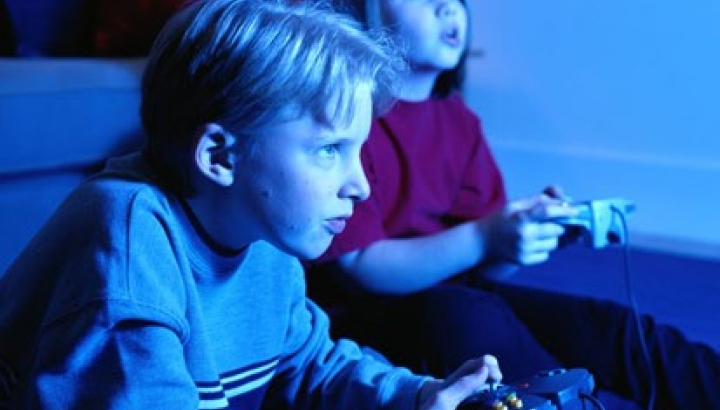Making time for open, unstructured, unplugged play improves relationships and helps children build self-management skills.
All parents want happy and successful children. Yet, too often we are led to believe that the best way to ensure that is to add more of everything to our children’s lives—more studying, more lessons, and more sports practices. That makes for a jam-packed, high-pressure family life for everyone.
As a developmental pediatrician, I’ve seen firsthand how families feel when caught between packed activity schedules and the social media-driven push to be “perfect.” In my new book, How Children Thrive, I pull from my experience and developmental research to reassure parents that they need not push so hard to assure their family’s well-being.
What children require to thrive is a whole lot more straightforward than it feels nowadays—and learning about how children develop makes life easier for both parents and their children. For starters, children today don’t require any more than children generations ago. They rely on stable and loving home environments, the opportunity to test limits we set, and adult support while discovering their own capacity to overcome challenges.
They also need to play—and not just on screens. As stated in an American Academy of Pediatrics policy statement, traditional play is “essential to the cognitive, physical, social, and emotional well-being of children and youth.” Children need unstructured, “unplugged” play—away from screens and computers—to grow in ways that will help them thrive throughout life.
In particular, executive function-based self-management skills—such as the ability to delay gratification, plan ahead, and control impulses—are crucial building blocks of resilience. These skills allow a child to not only succeed in normal circumstances, but to bounce back from adversity. One-time, early-childhood measures of these self-management skills correlate with later measures of achievement and well-being, including better test scores in high school, improved odds of graduating college on time, less likelihood of obesity as an adult, and even a higher adult income. In contrast to free play, video games rely on the game creator’s imagination (not the child’s) and promote a type of rapidly shifting attention, making it harder for children to focus in the real world.
That doesn’t mean we have to shut down video games all the time. Rather, healthy play is much like the image of a nutrition plate used to teach children to eat well: A balanced approach to “brain nutrition” requires a lifestyle mixing all sorts of mentally engaging activities. You cannot make a child enjoy anything specific, but you can reinforce a sensible variety of activities that includes lots of down time and play.
Life isn’t predictable, so rather than aiming to perfect and control everything, we set children up for success by building their resilience. Thankfully, the starting point for that resilience is child’s play.
Why is it so hard to keep kids off of screens?
While parents may understand that their kids would fare better without so much screen time, it’s not always easy to get them off. Screens have become a ubiquitous part of modern life.
A recent statistic showed that teens average nine hours of screen time daily beyond any time for work or school—as do their parents. This obsession with our screens is tied to poorer sleep, academic achievement, behavior, focus, and mood, leading to greater stress, less success, and careless mistakes.
Why is it so hard to let go of screens? Part of the problem is that these products are carefully honed to be as addictive and time-consuming as possible. If adults struggle with controlling their usage, certainly a child or teen—whose self-management skills are by definition immature until their mid 20s—will, too. To read more from MARK BERTIN, click here.

